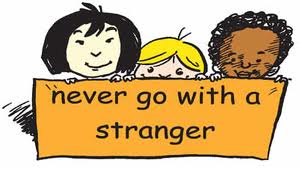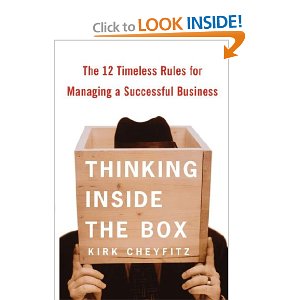 I am constantly amazed at how careless some non-profit organizations are with their volunteer recruitment efforts. Correct me if I am wrong, but building the right board, advisory group, or fundraising committee with the right people is at or near the top of every smart nonprofit professional’s task list. Right? Well, if this true, then can someone explain to me why I’m getting random emails and Linkedin requests from people I don’t know asking me to join something?
I am constantly amazed at how careless some non-profit organizations are with their volunteer recruitment efforts. Correct me if I am wrong, but building the right board, advisory group, or fundraising committee with the right people is at or near the top of every smart nonprofit professional’s task list. Right? Well, if this true, then can someone explain to me why I’m getting random emails and Linkedin requests from people I don’t know asking me to join something?
The following are a few excerpts from one recent email (names have been changed to protect the innocent):
“We are now accepting applications for the Associates Board. The Associates Board will provide young professionals with the opportunity to get involved in event planning, fundraising, social media, and recruiting . . .
To apply, please review the commitment, roles, and responsibilities, and our application procedures by clicking here.
If you have any questions, please feel free to contact XXX XXXXXXXXX, our Associates Board President, at XXX@XXXXXXXXX.org.
Please feel free to forward this email onto any young professional who you think may be interested!”
 There are so many things that concern me about an email like this. Here are just a few:
There are so many things that concern me about an email like this. Here are just a few:
- They don’t know me. They don’t know my skill sets. They don’t know if I would be a great fit for this volunteer opportunity.
- They don’t have the time to review important things like roles and responsibilities with me? They made this a self guided activity.
- So, they want me to think that I’m important enough to join their Associates Board, but I’m not important enough to call?
- They’re giving me permission to forward their invitation to anyone? I now fear who else could be sitting around this table talking about issues such as “event planning, fundraising, social media, and recruiting”.
Here is another random request I received from someone I don’t know via LinkedIn (again, I changed the names to protect the innocent):
“Hey Erik,
Would like to have you as a member of the XXXXX National Fundraising Advisory Committee, what day and time can we discuss? Please check out our website at www.abcdefg.net for more information, I look forward to speaking with you!”
I must admit that I’ve sent out “messages in a bottle” like this, but I have never been so presumptuous as to ask someone I don’t know to do anything other than please take a phone call from me.
Have you ever had the pleasure of sitting on a board or committee with a group of very caring people who don’t have a clue as to how to do what they are being asked to do? If you have been spared this experience, I sincerely hope you never get the opportunity because it is frustrating.
I believe that non-profit professionals need to construct volunteer groups (e.g. boards, committees, etc) in much they same way they hire staff.
- Put some thought in what skills the people around the table will need to accomplish what you’re asking of them.
- Approach people who you believe possess such skills.
- Be clear about expectations upfront in order to avoid misunderstandings. Share written volunteer job descriptions, roles & responsibilities documents, and written plans with volunteers before asking them to join.
Recruiting random people to do work for your organization is irresponsible. It can set people up for failure. It can also create horrible group dynamics and poor results.
If this blog post is not resonating with you, then let’s agree to do this. I will go to a very public place and ask for random volunteers to attend your annual campaign kickoff meeting with me. You will entrust us with pledge cards and some personal information about your donors. Let’s see how well this works out for you and your campaign, and we can talk about it at your post-campaign critique meeting.
We’ve all made mistakes in recruiting volunteers, and we can all learn from each other’s mistakes. Without embarrassing yourself or anyone else, please use the comment box to share a few lessons learned and explain what you’re now doing differently.
Here’s to your health!
Erik Anderson
Founder & President, The Healthy Non-Profit LLC
www.thehealthynonprofit.com
erik@thehealthynonprofit.com
http://twitter.com/#!/eanderson847
http://www.facebook.com/eanderson847
http://www.linkedin.com/in/erikanderson847


























